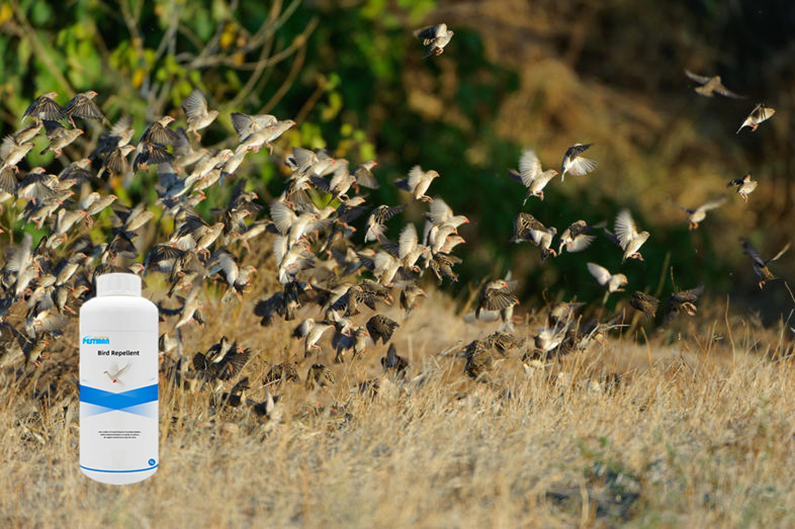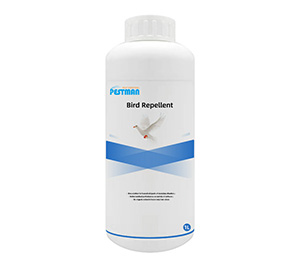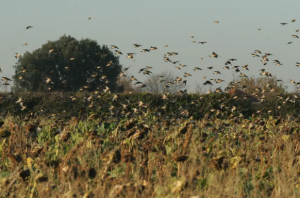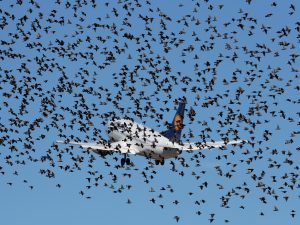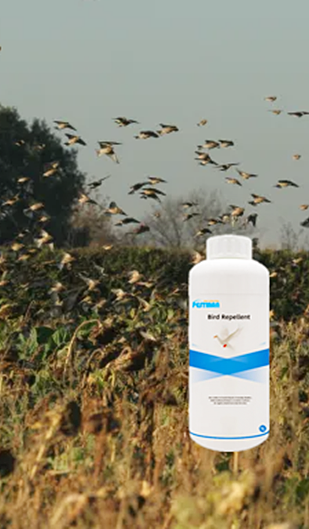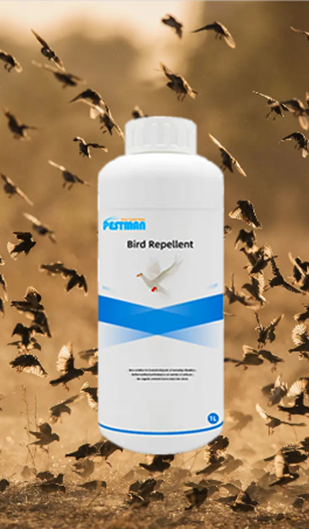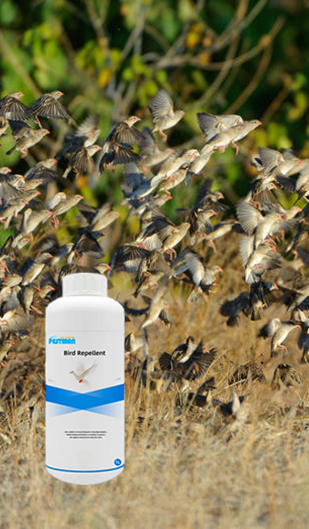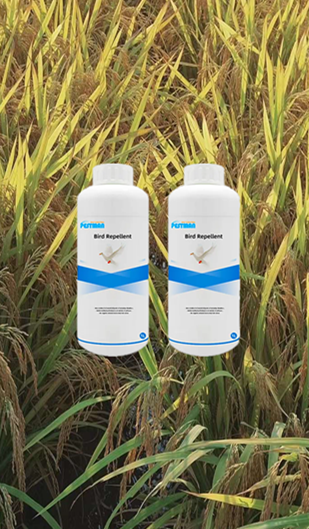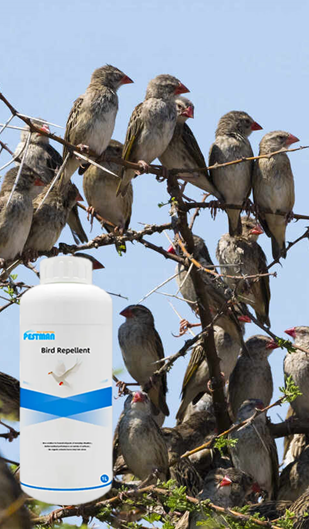The Quelea birds, a small weaver bird native to sub-Saharan Africa, is famous for its crop damage inflicted on small-grain crops within the regions. It holds the title of being the most abundant bird species globally, with a peak population estimated at 1,500,000,000 after breeding. The Quelea quelea primarily feeds on seeds but also includes insects in its diet when nourishing its chicks or preparing for migration and breeding. Its survival depends on a steady supply of grass seeds. However, when unable to find sufficient grass seeds, the quelea will attack crops. This species poses a significant threat across large parts of sub-Saharan Africa, leading to substantial economic losses.
Interestingly, the bird’s innate nomadic behavior leads it to track rain fronts, which explains its invasions into previously unoccupied areas. According to the report, the peak times for quelea infestation in African countries are:
January: Kenya
April: Zimbabwe
May: Malawi and Tanzania
June: Mozambique, Tanzania and Zimbabwe
July: Namibia and Tanzania
Crops Affected
Quelea primarily consume grass and cereal seeds both from plants and the ground, with a preference for grains measuring 1 x 2 mm in size. However, when queleas require additional protein, such as before migrating or breeding, they will turn to insects as a food source.
A colony consisting of over 12,000 nests per hectare was estimated to consume approximately 1,845 kg of seeds and 214 kg of insects per hectare on a monthly basis.
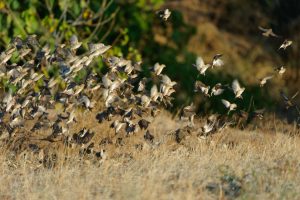
Quelea quelea have been observed eating various crops including barley, buckwheat, millet, oats, rice, sorghum, triticale, and wheat. However, they do not attack maize while it is still on the plant due to their small bills being unable to handle the size of the seeds. Nevertheless, quelea will feed on crushed maize at feedlots. According to statistics, Quelea birds cause damage up to the equivalent of US$ 88.6 million per year throughout semi-arid zones (south of the Sahara).
-Dry Season:
Irrigated crops affected e.g. wheat.
– Early rainy season, after “early rains migration”:
Irrigated crops e.g. rice and early ripening rain-fed crops.
-Rainy season:
Rain-fed crops e.g. sorghum, millet.
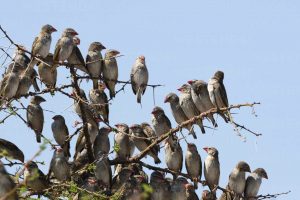
Environmental Requirements
The quelea birds can be found in African regions with semi-arid vegetation, ranging from sea level to an altitude of 3000m. They typically inhabit areas with thorn bushes and are often located within a distance of about 30km from water sources. These birds are commonly encountered in agricultural land.
Prevention and Control
1.Pesticides
1)Fenthion:
Fenthion (known as Queletox) is used in many countries in Africa for aerial and ground spraying (Sprayed by aircraft or from vehicles) to eradicate quelea finches. However, fenthion is toxic to non-target species including rodents, fish and other birds. Residues of fenthion persisted for 45 days and were still detectable five months later. Fenthion residues can persist in the air for 64 hours.
Due to the lack of training of the operators, fenthion was not used indiscriminately according to the regulations, and some people were poisoned or even died. At the same time, it also caused the death of other organisms and destroyed the ecological balance. The use of fenthion also has raised concerns among many farmers and opposition from environmental groups. Overall, this control method has a negative impact on people, wildlife, and water sources.
2)Cyanophos:
Cyanophos is a pesticide that serves as a less harmful alternative to Fenthion (lower mammalian and avian toxicity than fenthion), minimizing risks to mammals and non-target birds. Although its lower toxicity makes it safer, it also means that it takes more time to eliminate the target birds. Moreover, as the birds travel across wide geographical areas, Cyanophos can be spread, potentially leading to increased secondary poisoning of carnivorous animals that consume these birds. It is worth noting that Cyanophos is categorized as an extremely hazardous substance in both the United States of America and the European Union. The latest research shows that Cyanophos are no less harmful to the environment than Fenthion.
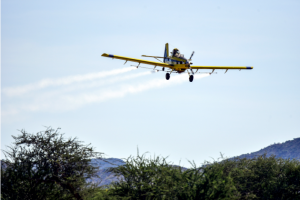
2.Scare tactics
Traditional bird scaring: Farmers have attempted to control quelea birds by chasing or scaring them away from their fields. People are deployed to guard the fields and routinely generate loud sounds to scare the birds away. Alternatively, scarecrows in the form of brightly coloured plastics on sticks are placed across the grain fields. High labor cost, labour-intensive, ineffective.
Commercial bird scarers: Farmers use Bangalore bird scarer, Bird X-peller or Agrilaser to scaring queleas away. After a few days the quelea finches are no longer afraid because they are so adaptable, and then the product loses its effectiveness.
Bird scaring with drones or laser bird deterrent: The cost is high, it can only be used in a small area, and it cannot be widely promoted in Africa.
3.Habitat destruction
Quelea quelea gather and rest in a specific area before move to other area. This presents an opportunity to reduce their numbers through different methods of control. In many African counties, eradication campaigns have been conducted on a large scale in breeding sites using explosives or fuel-based devices. Some have also attempted to eliminate breeding and roosting sites by employing tractor-mounted equipment for clearing vegetation.
However, in the case of Zimbabwe, quelea birds choose national parks as their roosting grounds. As a result, this control approach becomes problematic since it would also harm the environment and habitat of other bird species and animals.
4.Cultural control
Crop time management: the grain can be harvested when there are few or no quelea present.
Early-maturing crop varieties: May not escape attack, but they will be vulnerable for shorter periods than latematuring crops.
Alternative or resistant crops: For example, tannins in sorghum but poor efficacy and low consumer acceptance.
Water management: Irrigated crops can be timed for harvesting when there are no quelea. For example, In Chad and Cameroon irrigated rice timed for mid-May to mid-June. In Ethiopia: irrigated sorghum planted in September can be harvested in December.
Cultural control is the wisdom of African farmers, but it cannot really solve the problem, nor can its solutions be universally applied to all crops.
Recommendations for quelea control without fenthion:
Pestman Bird Repellent
Pestman bird repellent can repel mostly harmful birds on damaging various crops. According to experiments on rice, wheat, millet and wheat, Pestman bird repellent is an excellent bird repellent product against Quelea quelea in the cereal crops area in Africa. It is a biological slow-release formulation developed by Pestman Group in China, specifically designed for bird repellence in agriculture.
Key benefits of Pestman Bird Repellent:
– Immediately repel the quelea birds through smell, taste and visual sense. The effect of repelling birds can last more than 30 days.
– The main active ingredient is food-grade flavor, does not contain any pesticides or toxic substances. Safe to humans, animal and environment.
– Only repels quelea birds away, does not kill them or any other animals. Does not affect the ecological balance.
– Easy to use. Sprayed by aircraft, vehicles or other spray equipment, and it is very labor-saving. Suitable for treating large areas.
– Effectively preventing Quelea birds and other harmful birds from damaging the cereal crops.
Working principle:
The active ingredients are MethyI Anthranilate (MA) and other natural flavors. This combination can achieve the effect of repelling birds through smell, taste and sight sense. The repellent will irritates birds’ trigeminal systems which will make them very uncomfortable. After spraying on the treated area, the repellent liquid will absorb ultraviolet light, disrupting the vision of birds and making them frightened. Pestman bird repellent creates an invisible barrier by a harmless but potent effect and the birds will not fly back to the treated crop fields during their memory period.
Long-term efficacy:
Another core product advantage is the duration of long effect time. With the slow-release microcapsule technology, Pestman bird repellent slowly released and degrades in the applicated area, continuously working to repel the harmful birds away for more than 30 days.
Recommended Dosage:
As for the Quelea birds, the recommended dosage rate will be 1.0-1.5 ltrs Pestman bird repellent for one hectare crop fields, and we suggest you to applicate one or two times in one crop season. While providing products, we will also provide different solutions according to your local Quelea birds damage situations.
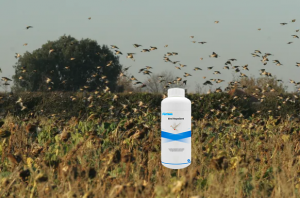
If you have any questions, please feel free to contact with us as followed:
Technical Director: Mr. Jacky
WhatsApp: +86 18958096066
E-mail: info@pestman.com.cn
You can also reach us through the chat window in the lower-right corner of our website.


